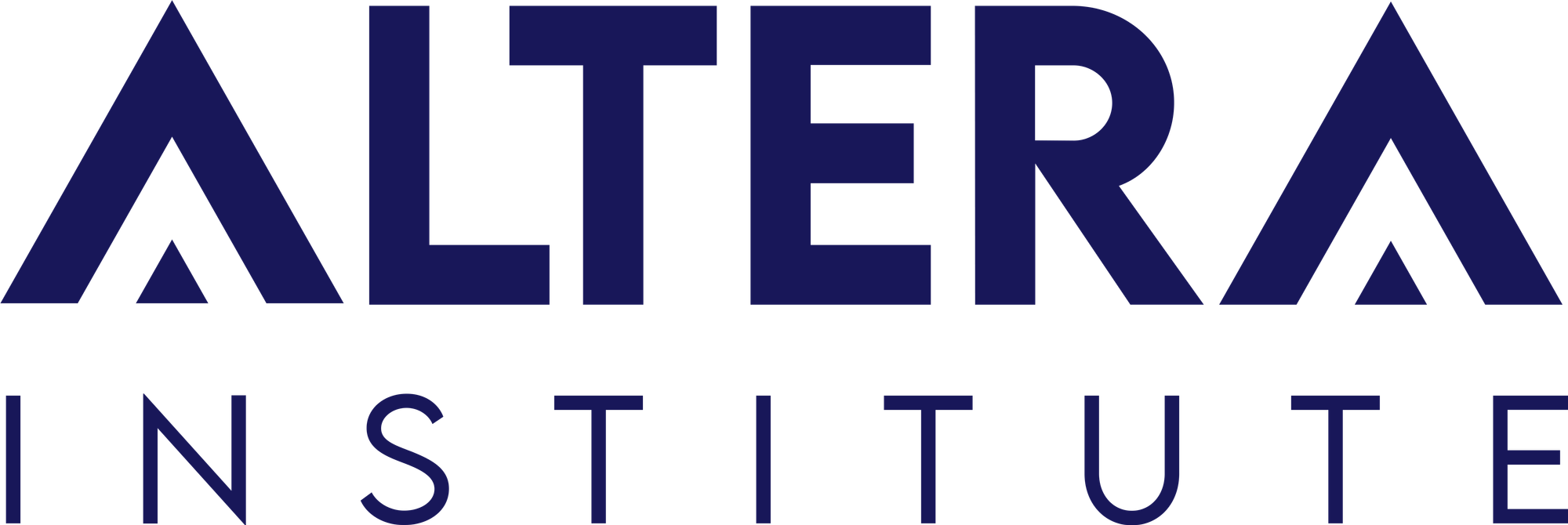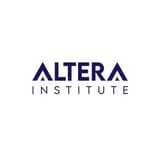Performance Marketing vs Digital Marketing: What is the Difference?
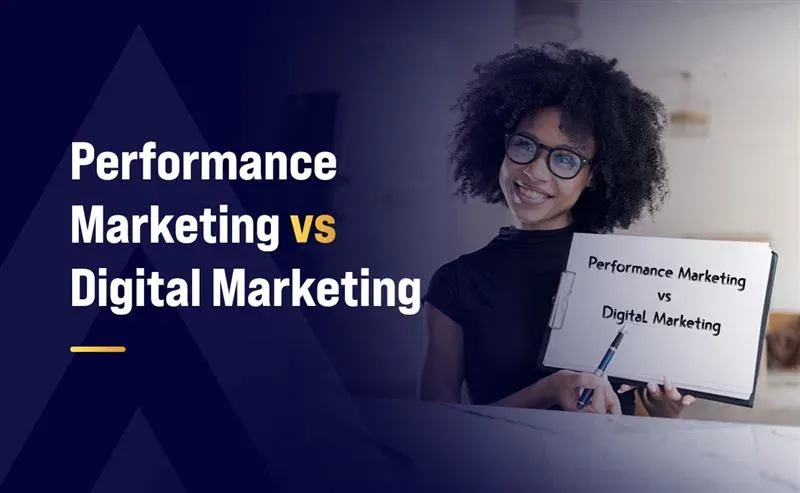
Modern-day marketing is marked by businesses constantly searching for the best ways to grow and reach their target audience. They realize the endless potential of digital-first strategies while investing heavily in pay-per-click (PPC) ads, content creation, and video marketing campaigns to achieve their goals.
With so many options available, businesses often struggle to determine whether they should invest in long-term brand-building strategies or should they focus on immediate, measurable results.
This leads to the dilemma between performance marketing and digital marketing, as they serve different purposes and require different execution strategies even though they both exist in the digital space.
What are Digital Marketing and Performance Marketing?
Let’s understand the differences with performance marketing vs digital marketing examples:
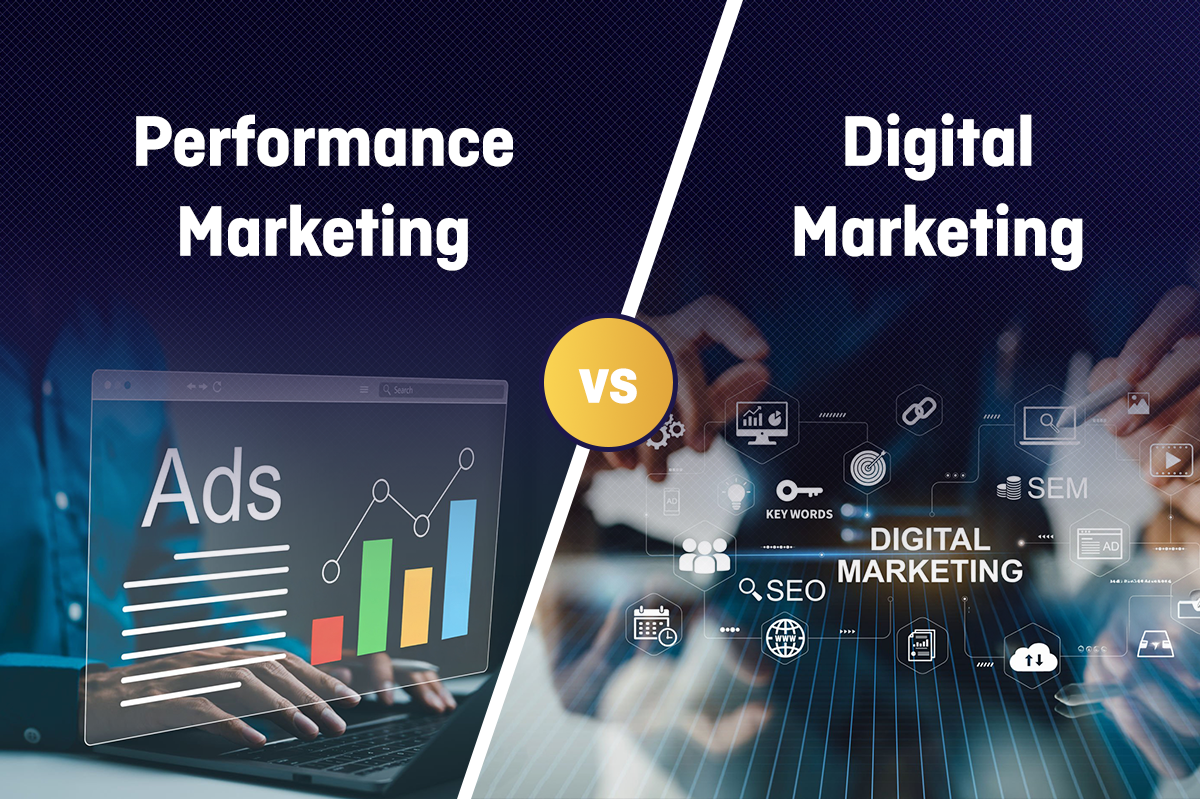
Digital Marketing
Digital marketing is a broad term that encompasses all online efforts to promote a brand, sell products, or connect with potential customers. It includes a wide range of strategies and tools, such as:
- Social Media Marketing: Engaging with audiences on platforms like Instagram, Facebook, and LinkedIn.
- Email Marketing: Distributing curated newsletters and promotional messages to cultivate potential customers.
- Search Engine Optimization (SEO): Enhancing website elements to achieve superior search engine rankings, particularly on Google.
- Content Marketing: Developing valuable resources like blog posts, video content, and visual guides to draw in and maintain customer interest.
- Pay-Per-Click (PPC) Advertising: Implementing targeted paid advertising campaigns across search platforms and social networks.
The primary goal of digital marketing is to build brand awareness, drive traffic, and engage with the target audience. The approach requires sustained effort to establish digital dominance and cultivate meaningful relationships with customers.
Performance Marketing
In contrast, performance marketing represents a results-oriented subset of digital promotion, where payment is directly tied to specific user behaviors or achievements, such as click-throughs, prospect generation, or completed transactions. Think of it as a “pay-for-performance” model. Common examples include:
- Cost-Per-Click (CPC): Paying each time someone clicks on your ad.
- Cost-Per-Thousand (CPM): Compensating based on every thousand advertisement views received.
- Cost-Per-Action (CPA): Financial obligations triggered exclusively by completed desired actions, like purchases or registrations
Performance marketing stands out for its precise measurability and emphasis on immediate objectives, particularly lead generation and conversion rate optimization (CRO). It’s ideal for businesses that want to see immediate results and track their return on investment (ROI).
Key Difference Between Performance Marketing vs. Digital Marketing
While both performance marketing and digital marketing operate in the online space, they serve distinct purposes and are used differently to achieve business goals. Recognizing these distinctive characteristics helps marketers select appropriate strategies for their specific objectives. Here’s a detailed breakdown:
Focus and Objectives
Digital Marketing: Digital marketing refers to all digital efforts to promote a company, increase awareness, and engage customers. Its primary focus is on long-term goals like brand building, customer loyalty, and creating a strong online presence. Key methodologies incorporate content creation, social platform engagement, search optimization, and targeted email outreach
Performance Marketing: This specialized branch of digital promotion concentrates on trackable, immediate outcomes, aiming to trigger particular user responses, from clicks to conversions. It’s highly results-oriented, with campaigns designed to achieve a clear return on investment (ROI).
Payment Models
Digital Marketing: The field utilizes multiple payment structures, spanning fixed-rate agreements, click-based payments, and impression-based pricing models. Payment is often made upfront or based on broader metrics like engagement or reach.
Performance Marketing: This approach implements a success-based compensation structure where businesses compensate only for achieved outcomes. Standard frameworks include:
- Cost Per Click (CPC): Compensation occurs per advertisement click.
- Cost Per Lead (CPL): Payment based on each qualified lead generated.
- Cost Per Sale (CPS): Pay only when a sale is made.
- Cost Per Acquisition (CPA): Fees assessed for specific completed user actions, from form completion to application installations.
Implementation and Targeting
Digital Marketing: Digital marketing campaigns are often broad and general, aimed at reaching a wide audience. For example, a social media campaign might target all users interested in fitness, regardless of their intent to purchase.
Performance Marketing: These campaigns employ precise audience targeting methods, focusing resources on demographics most likely to complete desired actions, such as advertisement engagement or purchase completion. For example, campaigns might specifically target previous website visitors who abandoned their shopping carts.
Timeframe
Digital Marketing: Digital marketing is a long-term strategy focused on building relationships and brand loyalty over time. Benefits may require extended periods, potentially spanning multiple quarters or years.
Performance Marketing: Performance marketing is a short-term strategy designed to deliver immediate results. Real-time campaign refinements maximize investment returns, particularly benefiting organizations seeking rapid results.
Use of Data and Analytics
Digital Marketing: While digital marketing uses data to inform strategies, the focus is on qualitative insights, such as understanding customer behavior and preferences.
Performance Marketing: This methodology prioritizes data-driven decision-making and quantitative assessment, with continuous campaign optimization based on performance metrics.
While digital marketing provides the foundation for building a brand and engaging audiences, performance marketing focuses on driving immediate, measurable outcomes. These complementary approaches create a comprehensive growth strategy for businesses targeting both immediate and sustained expansion.
Metrics to Measure Performance Marketing
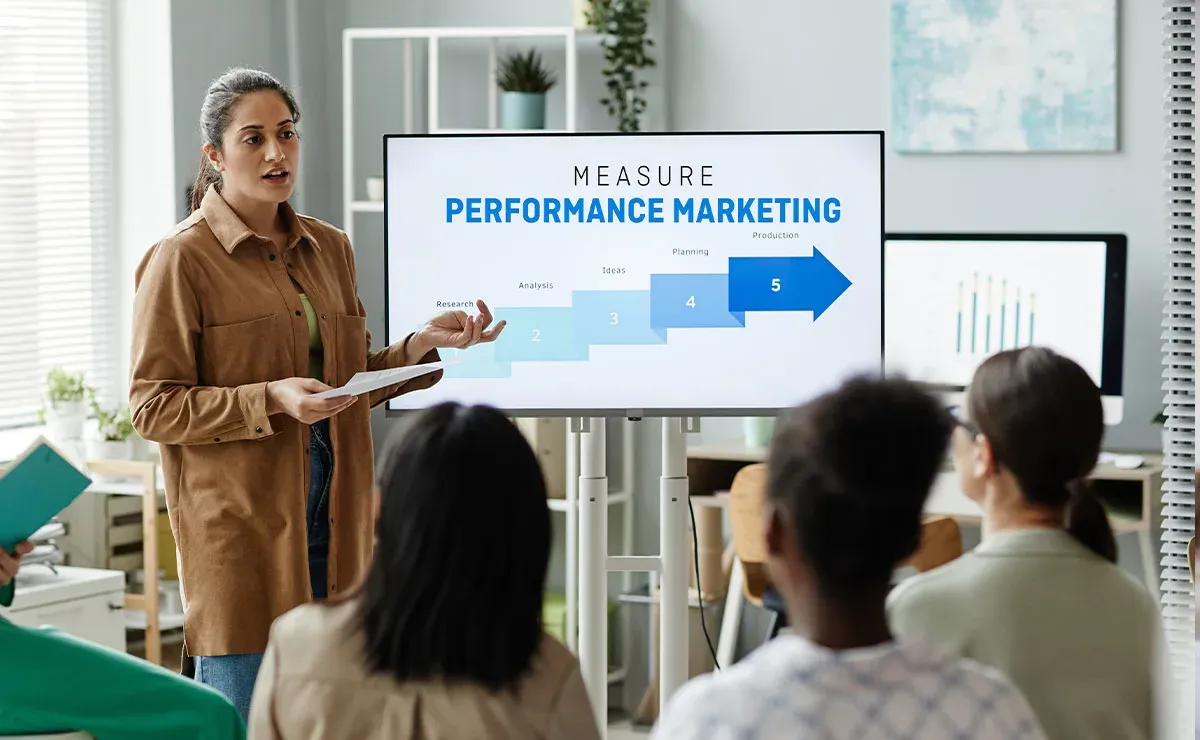
The success of a performance marketing campaign is determined by how effectively it achieves specific, measurable outcomes. Unlike conventional marketing approaches emphasizing brand recognition without immediate performance indicators, performance marketing emphasizes live data tracking and return measurement. Key performance indicators vary based on campaign objectives, whether building awareness, acquiring leads, or driving sales.
Here are the key performance marketing metrics you should track to evaluate and optimize your campaigns:
Cost Per Impression (CPI) / Cost Per Thousand (CPM)
- What It Measures: The cost incurred each time an ad is displayed to a potential customer. When calculated in bulk, it’s expressed as Cost Per Thousand (CPM) impressions.
- How to Calculate:
- CPI: Total campaign cost ÷ Total impressions.
- CPM: CPI × 1,000.
- Example: If your campaign costs Rs 300 and garners 30,000 impressions, your CPI is Rs 0.01 (1 cent per impression), and your CPM is Rs 10.
- When to Use It: Ideal for top-of-the-funnel campaigns aimed at maximizing brand exposure and awareness.
Cost Per Click (CPC)
- What It Tracks: The amount spent for each individual click on an advertisement.
- How to Calculate: Total campaign cost ÷ Total clicks.
- Example: If your campaign costs Rs 250 and generates 2,500 clicks, your CPC is Rs. 0.10.
- When to Use It: Best for mid-funnel campaigns where the focus is on driving engagement and encouraging users to take the next step.
Cost Per Lead (CPL)
- What It Tracks: The cost of acquiring a potential customer lead (e.g., email sign-ups, inquiries).
- How to Calculate: Total campaign cost ÷ Total leads.
- Example: If a campaign costs Rs 400 and generates 20 leads, the CPL is Rs 20 per lead.
- When to Use It: Ideally suited for bottom-funnel initiatives designed to identify and cultivate potential customers.
Cost Per Conversion (CPC) or Cost Per Acquisition (CPA)
- What It Tracks: The cost of achieving a specific goal, such as a sale, download, or subscription.
- How to Calculate: Total campaign cost ÷ Total conversions.
- Example: If an ad campaign spends Rs 500 and generates 10 conversions, the CPA is Rs 50 per conversion.
- When to Use It: Essential for bottom-funnel campaigns where the primary objective is to drive actionable results and demonstrate ROI.
Metrics to Measure Digital Marketing
Selecting and monitoring appropriate performance indicators proves essential for campaign evaluation and alignment with organizational objectives. Consider these crucial metrics for assessing digital marketing success:
Conversion Rate
- What It Measures: The ratio of visitors completing predetermined objectives, including purchases, newsletter subscriptions, or information requests.
- Why It Matters: Conversion metrics directly indicate your platform's persuasive effectiveness. Strong conversion rates suggest successful targeting, engaging content, and streamlined user pathways.
- How to Calculate: (Number of conversions ÷ Total visitors) × 100.
- When to Use It: Use this metric to evaluate the performance of landing pages, email campaigns, or paid ads.
Customer Acquisition Cost (CAC)
- What It Measures: The comprehensive expense associated with acquiring each new customer, factoring in both marketing and sales investments.
- Why It Matters: CAC reveals marketing efficiency levels. Reduced acquisition costs enhance overall profit margins.
- How to Calculate: Total marketing and sales costs ÷ Number of new customers acquired.
- When to Use It: Use CAC to assess the ROI of your campaigns and compare the effectiveness of different marketing channels.
Return on Investment (ROI)
- What It Measures: Campaign-generated revenue compared to implementation costs.
- Why It Matters: ROI serves as a critical profitability indicator for marketing campaigns, highlighting successful initiatives and areas requiring enhancement.
- How to Calculate: (Revenue from campaign - Campaign cost) ÷ Campaign cost × 100.
- When to Use It: Use ROI to evaluate the overall success of your marketing strategies and justify budget allocations.
Click-Through Rate (CTR)
- What It Measures: The proportion of users clicking on links, advertisements, or email content after exposure.
- Why It Matters: CTR indicates content resonance and relevance with target audiences. Higher rates suggest compelling messaging that motivates action.
- How to Calculate: (Number of clicks ÷ Number of impressions) × 100.
- When to Use It: Use CTR to measure the effectiveness of ads, email campaigns, and call-to-action buttons.
Customer Lifetime Value (CLV)
- What It Measures: Expected total generated revenue from a single customer, throughout the business relationship.
- Why It Matters: CLV guides strategic decisions regarding customer retention and acquisition approaches. A high CLV justifies spending more to acquire and retain customers.
- How to Calculate: Average purchase value × Purchase frequency × Customer lifespan.
- When to Use It: Use CLV to evaluate the profitability of your customer base and inform marketing and sales strategies.
Types of Performance Marketing
As performance marketing represents a digital marketing subset, it leverages various online channels where payment occurs solely for verifiable outcomes like clicks, conversions, or purchases. Despite the existence of multiple online marketing strategies, performance-driven campaigns specifically optimize certain channels. Below are the five most effective performance marketing channels:
Partnership Marketing
Partnership marketing establishes mutually beneficial relationships between businesses or between a company and an individual influencer, operating through channels like:
- Influencer Marketing: It pairs brands with content creators and thought leaders who have strong audience connections. Such partnerships demonstrate exceptional effectiveness, delivering returns up to eleven times greater than traditional advertising methods.
- Affiliate Marketing: Organizations collaborate with promotional partners utilizing unique tracking mechanisms. Affiliates earn commissions on resulting sales, creating an incentive-driven promotional system.
- Commerce Content Marketing: It connects brands with media outlets to create authentic editorial content that naturally incorporates product recommendations, maintaining credibility while driving sales.
Search Engine Marketing (SEM)
This strategy combines natural search optimization with strategic paid promotion. While SEO focuses on improving natural search rankings through optimization, paid search campaigns operate on a performance basis, where advertisers only pay when users engage with their ads.
Social Media Marketing

The evolving nature of social platforms perfectly suits performance marketing requirements, offering instant engagement possibilities and sophisticated demographic targeting capabilities.
Types of Digital Marketing
In today's digital landscape, marketing strategies have evolved to encompass various specialized approaches. Here are some fundamental types of digital marketing that businesses leverage for growth:
Content Marketing
The foundation of digital success lies in content marketing, where brands create valuable, informational assets like blog posts, tutorials, and educational materials. This strategy establishes organizations as thought leaders while naturally connecting with intended audiences. While content marketing is cost-effective and versatile, success requires consistent high-quality output and patience to achieve organic rankings.
Email Marketing
Email communications continue to prove themselves as invaluable for developing customer connections. By building subscriber lists and delivering valuable content, businesses can generate significant ROI. The key lies in providing exclusive value while maintaining consistent engagement without overwhelming subscribers.
Search Engine Optimization (SEO)
SEO concentrates on content optimization for improved search result placement, aligning with search engine requirements to enhance natural visibility. Though more cost-efficient than paid advertising, SEO requires technical expertise and adaptability to frequent algorithm updates.
FAQs
Q1. Is performance marketing and SEO the same?
Ans: No, performance marketing and SEO represent distinct digital promotional strategies with separate approaches and goals. While SEO focuses on improving organic visibility and traffic through website optimization, performance marketing is action-oriented and aims to drive measurable actions like sales and conversions through paid campaigns
Q2. What distinguishes digital media from performance media?
Ans: Digital media refers to all online marketing channels, including websites, social media, content marketing, video streaming, and email marketing. It encompasses both paid and organic strategies.
Performance media, however, is a subset of digital media that focuses solely on measurable results. It includes advertising methods like PPC (Pay-Per-Click), affiliate marketing, and paid social media ads, where businesses only pay for specific actions taken by the audience.
Q3. What is the Scope of Performance Marketing?
Ans: Performance marketing is ideal for businesses looking for measurable results and cost-effective campaigns. As consumer behavior shifts towards mobile-first and personalized experiences, performance marketing will continue to expand across social media, streaming platforms, and emerging digital channels.
Also check out an article on the scope of marketing today, marked by a digital-first age.
Conclusion
Digital marketing and performance marketing each contribute uniquely to organizational growth initiatives. While digital marketing focuses on long-term brand building and audience engagement, performance marketing prioritizes immediate, measurable results through data-driven campaigns.
Businesses should integrate both approaches to create a balanced marketing strategy that fosters brand awareness while maximizing ROI. As digital landscapes evolve, leveraging the right mix of these strategies will be essential for sustained success in an increasingly competitive market.
